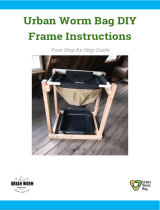Page is loading ...

Sensitivity: Internal
Tips & Tricks for Project Boards
What are project boards?
Project boards are pre-finished, smaller, easy-to-transport, easy-to-store, easy-to-handle craft
and hobby boards, available in a variety of styles and colors, excellent for a wide range of DIY
home projects.
Understanding project board finishes
Charred – Our method of charring wood uses the Japanese technique of shou-sugi-ban to
create artfully burned boards intended to create unique home décor projects, accent walls,
crafts, hobbies and more.
Rustic – These project boards are perfect for your next reclaimed-wood project. It's new lumber
that has been distressed, primed and painted to have the authentic look and texture of vintage,
rough-sawn, rustic barn wood.
Getting a clean edge when sawing project boards
Don’t own a saw? Ask a sales associate if complementary cutting is available. Most stores will
cut as many pieces as you’d like to any dimensions you need. Feel free to bring your project
instructions along so you’re ready to take advantage of this service when and where it’s
offered. The professionals are there to help!
All the cuts you need to make on your project boards can be made with a circular saw. A miter
saw and table saw work too – and can save time on large jobs – but the circular saw is your
Swiss army knife of cutting. Whichever saw you choose, make sure you’re using one with sharp
carbide teeth. A high number of sharp teeth – at least 80 – will ensure clean cuts, while dull
blades are more likely to chew up the edges of your wood.
Terms that describe cuts:
Rip cut: A cut going with the grain of the wood. Rip cuts are less likely to splinter.
Crosscut: A cut that is made across/perpendicular to the grain. This is where you’ll encounter
problems with splintering, chipping and other symptoms if your saw blade doesn’t have an
adequate number of very sharp teeth.

Sensitivity: Internal
For the cleanest possible cuts every time, use masking tape or painter’s tape. After measuring
your cut line, place a piece of tape over the line. Measure and mark your line again on top of
your tape. The tape will prevent the wood from splintering and chipping.
NOTE: When using a CIRCULAR saw, remember that the blade cuts UPWARD, so you’ll want
your preferred side to face DOWN in order to minimize defects. Conversely, TABLE saws cut
DOWNWARD, so you’ll want your preferred side to face UP in order to minimize defects.
Drilling Tips
We recommend predrilling whenever it’s necessary to screw into the sides/edges of a project
board. Drilling screws directly into a board without first predrilling may cause splitting.
When drilling throu gh project boards, if you do not predrill, the backside is likely to splinter, or
at the very least, create hairline cracks. Always drill from the front face to make sure the
visually important side of your project is as clean as possible.
If you’re looking to achieve a splinter-free look on both sides, try applying tape to the backside.
In the same way that tape helps during sawing, it will help keep your wood from splintering
when drilling. Don’t have tape? Clamp another piece of (sacrificial) wood to the backside, and
drill down into it for the same improved results.
Sanding Tips
Project boards should require very little (if any) sanding, but should you feel the need to, you’ll
want the proper tools for the job. These may include an orbital sander, sanding block or
sandpaper in a variety of grits, as well as clean rags or cloths for wiping away sawdust.
When looking for a smoother finish, use a higher, finer-grit paper (180-220 grit). The lower the
grade, the grittier the sandpaper. Grittier sandpaper is best for removing larger imperfections.
Finer grits produce smoother and more uniform results.
It’s important to be careful when sanding project boards, as it can be easy to inadvertently sand
through the finish. This produces what’s referred to as a “burn,” where the layer underneath
the finish shows through. When you’re looking to achieve a very light, even finish, it’s always a
good idea to make a few light pencil marks on the surface of your board and use them as a
benchmark for how deep you’re sanding.
On the other hand, some people intentionally create the “burn” effect, as it can be used to
achieve a number of creative looks.
/





